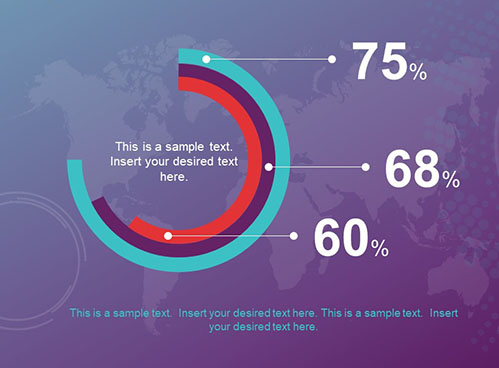Every business with a physical footprint that deals in tangible goods will eventually run into optimization issues with their supply chain. It’s a simple factor of business: If something can be shipped poorly, it will be. Whether poor driving efficiency or less than ideal distribution station choices drive down the yield of your business, the end result is a flow of products that could lead to millions of dollars in waste that aren’t immediately visible to scrutiny.
While moving a box across the country will never be a perfected task there are tools available in the realm of data visualization that can help pinpoint where a business’ supply chain needs the most attention.
Data visualization: Business basics
At its most basic level, data visualization for a business can be as simple as putting an overlay of delivery chains on a country-wide map and calling it a day. Unfortunately this approach cuts out many of the most useful aspects of collecting and collating data in favor of making it easier to digest. As such, data visualization works best when handling specific problems and analyzing certain data points:
- Points of congestion
- Efficiency of distribution center placement
- Distribution cost analysis
Each component makes for an important part of putting data into an easily digestible format, but the issue of turning numbers into results is well documented. Until data is used towards an end, it’s just a collection of numbers. As such the implementation of efficient solutions will always be more valuable than the raw data used to make those changes, but putting that data to use is the first big hurdle to overcome in proper implementation.
It’s rather appropriate that data visualization in its many forms has become integral to many fields that may seem like abstract choices for visualization. Mapping the color palettes used by famous artists and using a visual medium to express them may not spring to mind immediately and it won’t clear up shipping routes, but taking in strictly visual information is easiest when presented in a nicely packaged visual format.
If you’re concerned that implementation might be impossible in your business, you’d be surprised by how flexible data visualization can be.
Global problems require global solutions
In businesses with worldwide clients, many problems that are effective in a single country simply won’t work without tailoring solutions to meet specific problems. Collecting and visualizing data for specific regions in which a business hopes to operate is a step towards understanding risks and potential issues, but there are some problems that can only be overcome by clever use of that data.
Current political climates between the United States and China have led to a trade war that has slowed many businesses that rely on a strong working relationship between the two countries. Chinese manufacturers and suppliers are responsible for a great deal of goods and materials that are either then put to use in a refined form or delivered through a middleman, which is effective thanks to the relatively low cost of sourcing and delivering products from overseas. Various dropshipping pros and cons become magnified by inefficiency, poor handling and miscommunication.
Businesses must move to adjust accordingly and time spent scrambling to source and review data leads to losses that can permanently harm their growth. When margins decrease, visualization as a cost measurement tool becomes integral to import and export business optimization without sacrificing months of progress. If overseas shipping becomes less lucrative, tightening existing supply chains and cutting out the biggest cost burdens becomes the next logical step.
Implementing your solutions
Once you’ve found the problems inherent in your supply chain, how do you solve them? The data collected and bundled into an efficient format is only as helpful as how you present it to those with the power to implement tangible change. It’s not even a problem that large headquarters must deal with, as even shipment centers and carriers need to be alerted to inefficiencies.
As always, analyzing the data you have and presenting only that which is most pertinent will have the greatest results. Overwhelming problem-solvers with data that is unrelated to their largest issues may only server to clog up an otherwise effective rollout as they scramble to address dozens of problems all at once. Worse yet, tertiary information that can be more effectively rolled into a broad solution might lead to dismissal of other small problems as something that will be lost in the shuffle.
If a shipping company tracks their average delivery route time and finds that a specific street causes more problems than others, but then goes further and discovers an issue with distribution that would be better solved by moving the burden of delivery to another center, the information pertaining to a trouble street likely isn’t worth focus unless it proves to be a recurring issue.
It’s not the end-all solution, but rather the tool with which you can identify troubled areas and support future solutions by continuing to compare data as solutions are rolled out. Visualization isn’t a one-stop bandage to inefficiency, but rather the means by which you can prove growth or failure through diligent study.
If you find your grasp of supply and demand is lost in the world beyond the scope of your business, data visualization is one of the quickest ways to find problems in a way that is digestible and accessible to nearly anyone. Implementing your changes will always be more difficult than putting together the visualization but the effectiveness of a visual medium could cut hours of anguish out of your problem solving routine.








![60 stats & trends that will define the future of eCommerce [Infographic]](https://crayondata.ai/wp-content/uploads/2022/05/eCom-374x288-1.png)
